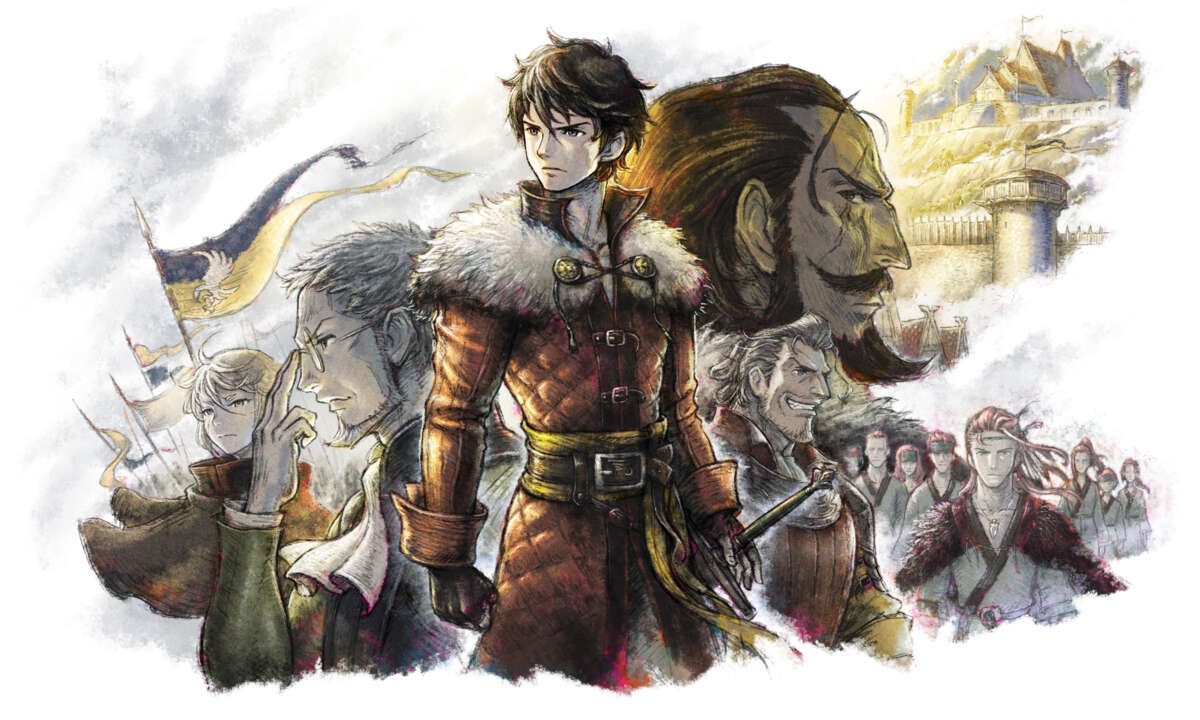Triangle Strategy isn't the spiritual successor to Final Fantasy Tactics that it appears to be.
Though the HD-2D game certainly looks like the venerated strategy-RPG, it quickly becomes clear from playing that this is a game that wants to forge its own identity with a mixture of new ideas and streamlined systems. And while some of these improvements make for a better, more modernized take on the 1997 grid-based strategy game, others remove a level of player agency and tactical character development that were vital to making that classic feel so special.
The story of Triangle Strategy takes place on the continent of Norzelia, which is split into three nations: the monarchical Glenbrook and Aesfrost, and the theocratic Hyzante. Each controls its own particular natural resource that’s crucial to the survival of all three kingdoms, and this has led to conflict in the past. We pick up 30 years after the “Saltiron War”–a conflict over Hyzante’s salt and Aesfrost’s iron–with a new generation ready to put those past prejudices behind them. The story follows Serenoa Wolffort of Glenbrook, the new leader of a noble family known for its heroism and efforts to protect the crown. Serenoa is on the verge of marrying Princess Frederica from the neighboring Aesfrost, as a gesture of peace between the nations. Their plans are interrupted, however, by an attack that deposes the king and puts Serenoa on the run with his childhood best friend, the prince Roland.
It’s a story of war over resources, old grudges coming back to haunt a generation that had nothing to do with them, and bad state actors invading a neighboring nation under false pretenses. It’s familiar in the way that war is universal and cyclical, but it’s hard not to feel a pang from the eerie similarities to current world events–at one point, the villainous invaders stage a false attack to serve as a pretext for their war, with the stated goal of installing a puppet regime. It’s also incredibly dense, and the flowery prose drops references to lords of high houses and their own individual political machinations with the unapologetic speed of a Game of Thrones episode. You may want to familiarize yourself with the word “demesne” because you’re going to be hearing it a lot.

It’s a lot to track, and all of this makes the game incredibly chatty, to its own detriment. You’ll often go long stretches at a time without any gameplay at all. At times it feels like an unnecessary degree of dialogue, as the squat pixelated characters go through all the pleasantries before getting down to business. At 16 hours played so far, I would estimate that I’ve only seen roughly 8-10 story missions, although I’ve also spent a fair amount of time on training missions as well. And this talkative quality means it doesn’t really put its best foot forward, as the first several hours consist of a lot of very slow setup and background story details before the betrayals and political machinations really begin. There are also a handful of free-roaming segments where you can talk to villagers–and it behooves you to speak to everyone you can, for reasons I’ll explain later–but I found my interest in talking to everybody sapped by having so much dialogue in general.






